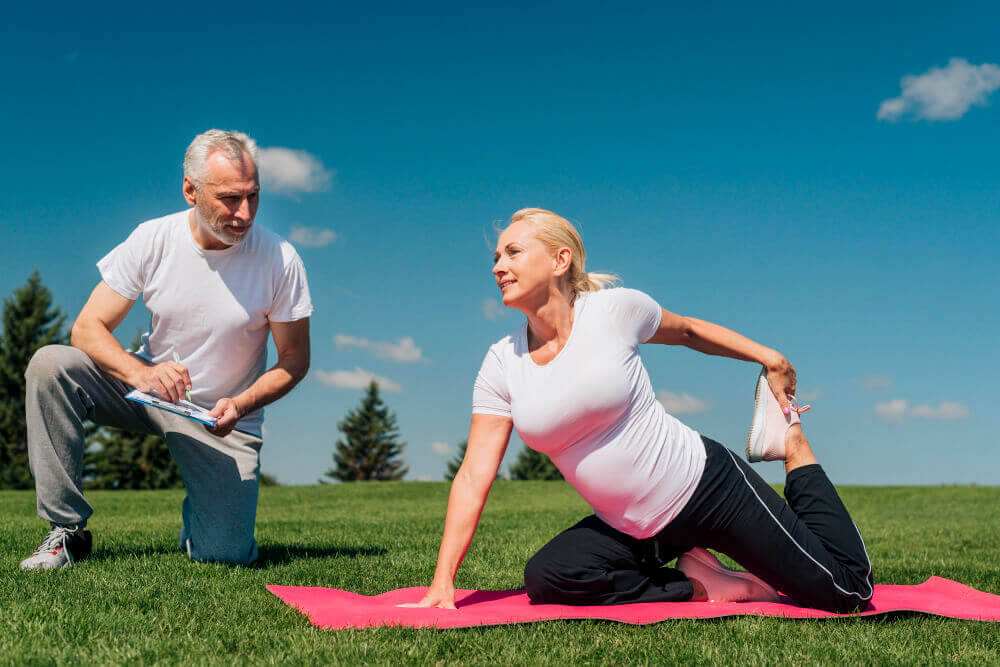Beyond Rest: Active Solutions for Pain-Free Joints
Arthritis. It’s a word that can strike fear into the hearts of many, conjuring images of limited mobility and constant pain. But what if we told you there’s more to the story? While joint pain is a common symptom of arthritis, a diagnosis doesn’t have to equate to a life of inactivity.
This article delves beyond the traditional advice of “rest” and explores active solutions for managing joint pain. We’ll partner with the expertise of orthopedics to equip you with proven strategies for regaining pain-free movement and maintaining an active lifestyle.
Understanding Arthritis and Its Impact on Joints
Arthritis is a broad term encompassing over 100 different conditions affecting the joints. The most common types are:
- Osteoarthritis: This “wear-and-tear” arthritis results from the breakdown of cartilage, the cushioning material between bones.
- Rheumatoid Arthritis: An autoimmune disease causing inflammation in the joints, leading to pain, stiffness, and swelling.
Regardless of the type, arthritis can disrupt the smooth functioning of joints, causing:
- Pain: This can range from a dull ache to a sharp stabbing sensation, often worsening with activity.
- Stiffness: Joints may feel stiff, especially upon waking or after periods of inactivity.
- Reduced Mobility: Difficulty bending, flexing, or extending joints, limiting movement.
- Inflammation: Some forms of arthritis cause swelling, redness, and warmth around the affected joint(s).
These symptoms can significantly impact your daily life, hindering your ability to participate in activities you once enjoyed. But there’s hope!
Moving Forward: Active Strategies for Managing Pain
For a long time, the traditional approach to joint pain focused on rest and minimizing activity. However, research has shown that movement is actually a critical component of managing pain and maintaining joint health. Here are some active strategies proven effective:
- Exercise: Regular physical activity strengthens the muscles surrounding the joint, providing support and stability. This reduces stress on the joint itself, leading to decreased pain and improved flexibility. Consider low-impact exercises like swimming, walking, water aerobics, or yoga.
- Strength Training: Building muscle strength helps support the joints and improve balance, reducing the risk of falls and further injury. Start with light weights or bodyweight exercises and gradually increase intensity as tolerated.
- Stretching: Maintaining flexibility through regular stretching allows for a greater range of motion and reduces stiffness. Focus on gentle stretches that target the muscles around the affected joint(s).
- Physical Therapy: A physical therapist can design a personalized exercise program tailored to your specific needs and condition. They can also provide guidance on proper form and technique to ensure safe and effective exercise.
Remember: It’s important to listen to your body. Start slowly with any new activity and gradually increase intensity and duration as your pain allows.
Putting it into Practice: Examples of Safe and Effective Exercises
Now, let’s explore some specific exercises that can benefit different joints:
- Knee Pain:
- Walking: A low-impact activity that strengthens leg muscles and improves knee flexibility.
- Strengthening Exercises: Squats, lunges, and calf raises can be tailored to various fitness levels.
- Stretching: Focus on hamstrings, quadriceps, and calves to improve flexibility around the knee joint.
- Hip Pain:
- Swimming: Provides excellent cardiovascular exercise without stressing the hips.
- Yoga: Many yoga poses promote hip mobility and flexibility while strengthening supporting muscles.
- Side-Lying Leg Lifts: This exercise strengthens the hip abductor muscles, crucial for hip stability.
- Shoulder Pain:
- Water Aerobics: Offers a gentle range-of-motion workout for the shoulders in a low-impact environment.
- Arm circles: Forward and backward arm circles improve shoulder mobility.
- Wall Slides: This simple exercise strengthens the muscles around the shoulder blades, promoting proper shoulder alignment.
Remember: This list is not exhaustive. Always consult your doctor or a physical therapist for a personalized exercise program that considers your specific condition and limitations.
Building a Sustainable Exercise Routine for Long-Term Pain Management
Developing a consistent exercise routine is key to experiencing long-term benefits. Here are some tips for making exercise a part of your life:
- Set realistic goals: Start with short, manageable exercise sessions and gradually increase duration and intensity.
- Find activities you enjoy: This will make you more likely to stick with your routine. Explore different exercise options until you find something that fits your interests.
- Schedule your workouts: Treat exercise like any other important appointment in your day.
- Find an exercise buddy: Working out with a friend can add a social element and increase accountability.


